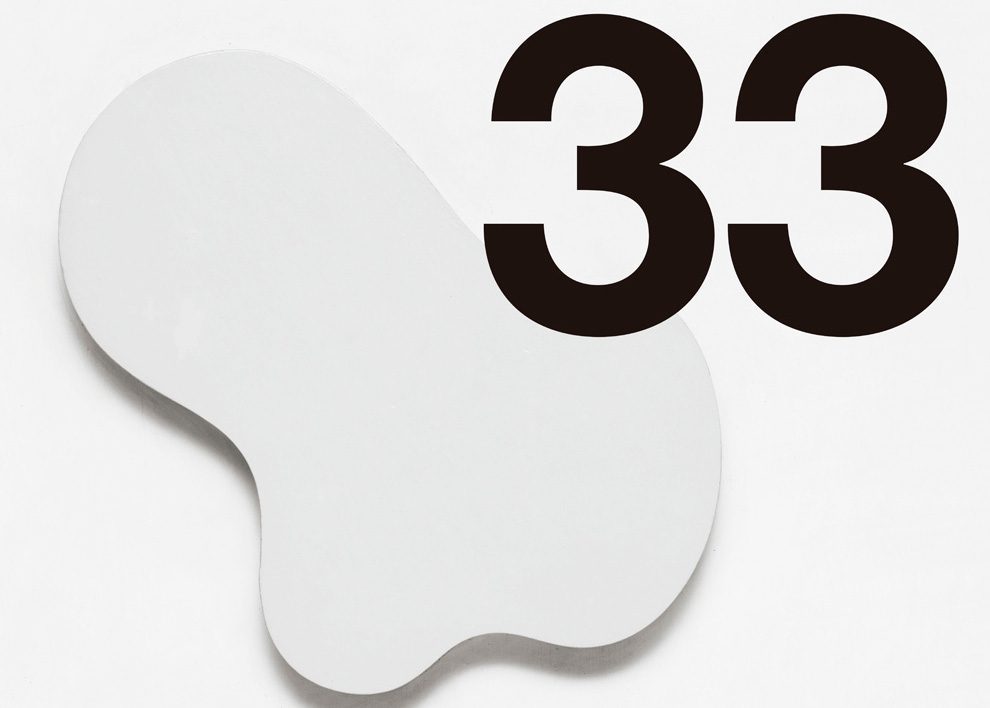Seven group shows curated by selected artists will be exhibited alongside twelve individual projects selected by chief curator Gabriel Pérez-Barreiro (previously announced)

© Arp, Jean / AUTVIS, Brasil, 2017. Formas expressivas (1932). Coleção Museu de Arte Contemporânea da Universidade de São Paulo. Design: Raul Loureiro Reprodução: Eduardo Ortega / Fundação Bienal de São Paulo
Appointed by the Fundação Bienal de São Paulo as curator of the 33rd Bienal de São Paulo – Affective Affinities after his proposal of organizing the event through an alternative ‘operating system’, Gabriel Pérez-Barreiro has conceived a Bienal that values the artists’ gaze on their own creative contexts and avoids a large thematic exhibition in favor of multiple curatorial experiences. As well the twelve individual projects previously announced, this edition includes group shows organized by seven artist-curators.
The projects
For her exhibition, Mamma Andersson (Sweden, 1962) selected a group of artists that have inspired and fueled her own production as a painter. The selection includes a wide range of references, such as 15th century Russian icons, the outsider artists Henry Darger (USA, 1892-1973) and Dick Bengtsson (Sweden, 1936-1989), and contemporary artists, such as filmmaker Guvnor Nelson (Sweden, 1931) and fighter pilot and sound artist Åke Hodell (Sweden, 1919-2000), among others. The exhibition also includes a selection of Andersson’s paintings.
Antonio Ballester Moreno (Spain, 1977) approaches his curatorial project as a way of contextualizing a world based on the intimate relationships that exist between biology and culture, with references to the history of abstraction and its dialogue with nature, pedagogy and spirituality. Among the participants, the show features the philosopher and educator Friedrich Fröbel (Germany, 1782-1852); Andrea Büttner (Germany, 1972); Mark Dion (USA, 1961); and Rafael Sánchez-Mateos Paniagua (Spain, 1979).
Sofia Borges’ (Brazil, 1984) curatorial project explores a collage of mythological references based on philosophical interpretations of Greek tragedy. The show — which includes works by Jennifer Tee (The Netherlands, 1973), Leda Catunda (Brazil, 1961), Sarah Lucas (UK, 1962) and Tal Isaac Hadad (France, 1976), amongst others — will be activated over three months through an experimental program in the exhibition space.
Waltercio Caldas (Brazil, 1946) proposes a reflection on poetics, as well as the nature of forms and ideas and its implication on the production of art since the late 19th century, including works by Victor Hugo (France, 1802-1885), Jorge Oteiza (Spain, 1908-2003) and Vicente do Rego Monteiro (Brazil, 1899-1970), among others.
Alejandro Cesarco’s (Uruguay/USA, 1975) proposal is based on his interest in issues such as repetition, narrative, and translation. He has selected artworks from artists that share some of his conceptual and aesthetic concerns. As well as the artist-curator himself, the show presents artists from three different generations, including Sturtevant (USA, 1924 – France, 2014), Louise Lawler (USA, 1947) and Cameron Rowland (USA, 1988).
In her exhibition, Claudia Fontes (Argentina, 1964), and her invited artists present artworks that activate links between the visual arts, literature and translation, through experiences that propose expanded temporality as an alternative to the modern fetish of speed. Every participant, with the exception of Roderick Hietbrink (Holland, 1975), has produced commissioned works for the occasion: Ben Rivers (UK, 1972), Daniel Bozhkov (Bulgaria, 1959), Elba Bairon (Bolivia, 1947), Katrín Sigurdardóttir (Iceland/USA, 1967), Pablo Martín Ruiz (USA, 1964), Paola Sferco (Argentina, 1974), Sebastián Castagna (Argentina, 1965) and ilvinas Landzbergas (Lithuania, 1979).
For her exhibition project, composed exclusively of commissioned artworks, Wura-Natasha Ogunji (USA/Nigeria, 1970) invited the artists Lhola Amira (South Africa, 1984), Mame-Diarra Niang (France, 1982), Nicole Vlado (USA, 1980), ruby onyinyechi amanze (Nigeria, 1982) and Youmna Chlala (Lebanon, 1974) to create, like herself, artworks through a horizontal curatorial project. The works of these six artists range from the intimate to the epic, and are impacted by their individual histories and by the complex relationship they have with their land, nations and territories.
Find out more here
More Editorial